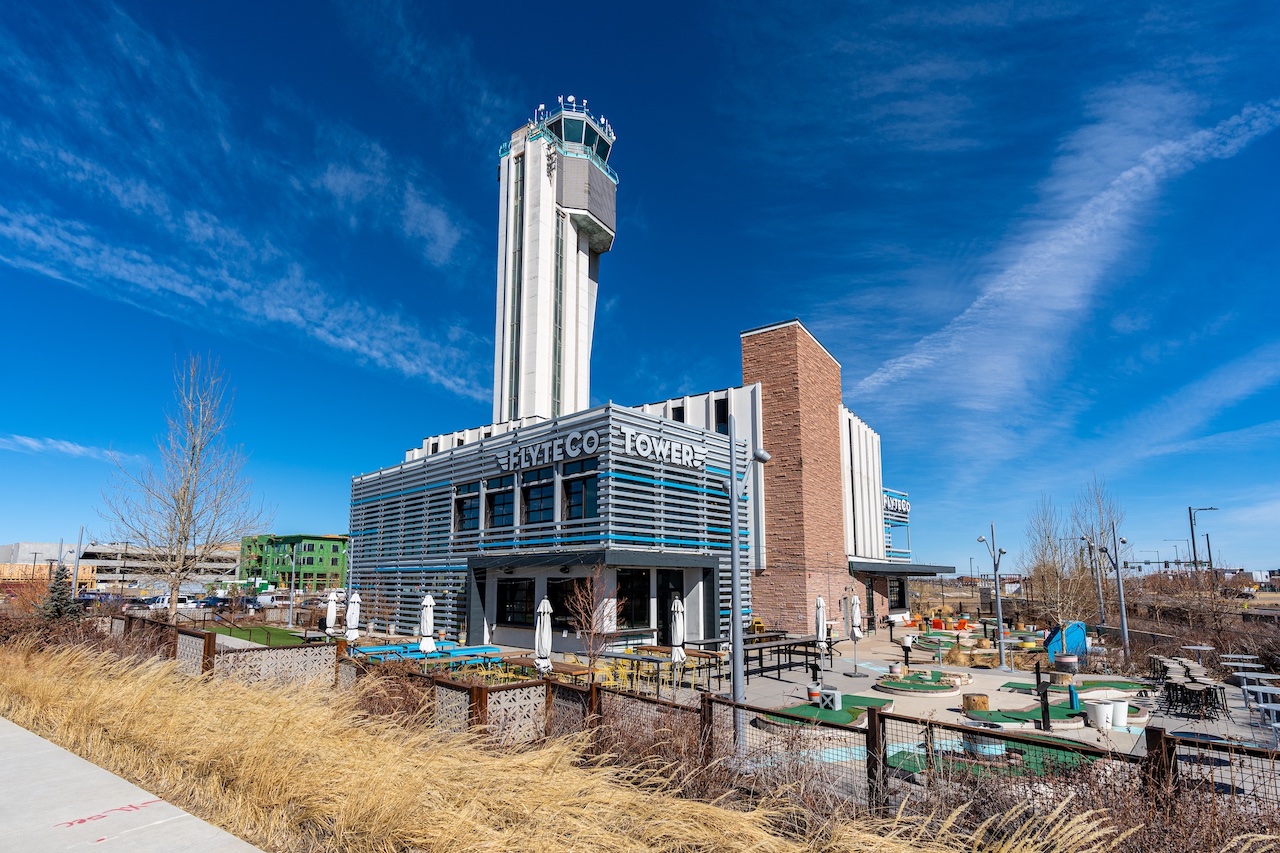The Denver International Airport is known for being both a hub for conspiracy theories as well as one of the busiest airports in the country. Given the prominence of DIA, it’s easy to forget its predecessor — the Stapleton International Airport, which closed in 1995. It has since been replaced by what has become Denver’s largest residential neighborhood: Central Park.
To look at it now, you would have no idea that the sprawling suburban landscape was once home to Denver’s first international airport, if not for the remaining air traffic control tower that looms over the neighborhood. For the first time in 25 years, the public will have the opportunity to climb to the top of the 164-ft historic Stapleton International Airport control tower.
First opened in 1929, Stapleton Airport played an important role in Denver’s development as a national transportation and shipping hub due to its central location and proximity to military bases. Longtime Denverites will remember that it was the first U.S. airport with an aircraft bridge over the I-70 highway, a thrilling sight for drivers.

As Denver grew in size and prominence, the city needed a new, larger airport to serve its aviation needs, and DIA was born. Stapleton Airport was demolished and replaced with Central Park, but the air traffic control tower and the building at its base, built in the ’60s, remained untouched and vacant for 20 years.
In 2017, Punch Bowl Social acquired the property and transformed it into a restaurant and entertainment center, complete with bowling lanes and a mini golf course. However, it was forced to shut its doors in 2020 due to the pandemic.

FlyteCO Brewing, an aviation-themed brewpub and entertainment center with a location in Denver’s Berkeley neighborhood, took over the space and opened in 2022. The company kept the bowling lanes and mini golf course intact, reactivated the restaurant and added the aviation-themed brewing concept, a full arcade, virtual sports simulators, ax-throwing lanes, and more.
Until now, only the first three floors of the tower had been renovated and accessible to the public. “The number one asked question when people walk in the front door and speak to the hostess is, ‘Can I go to the top of the tower?'” says FlyteCO tower co-owner Morgan O’Sullivan. “And we thought, why not figure out a way to say yes to that question?'”
For the first time in 25 years, the public will have the opportunity to take a climbing tour of the historical landmark’s 11 stories. Along the way, guides will provide insights into the role of air traffic control in aviation, and the history of the bygone Stapleton Airport.

Although the air traffic controls are no longer located at the top of the tower, participants will be treated to a breathtaking, 360-degree view of the surrounding Central Park neighborhood and the Denver skyline against the vast Rocky Mountains. Afterward, participants are welcome to take advantage of the food and entertainment options FlyteCO offers, and people of age will toast with a beer shot.
“There’s so many people like myself who moved here after the airport was closed. They don’t have any memory or recollection that this entire sprawling neighborhood used to be an airfield. So, it’s a really fun way to step back in time and get a sense of where we are now compared to where we were,” said O’Sullivan.
While tours of the old Stapleton International Airport control tower are currently available in a limited fashion starting in mid-November, the company hopes to add more tour dates in the near future, with the hope of making the tower regularly available to the public. You can find more information about this neighborhood staple (no pun intended) here.





